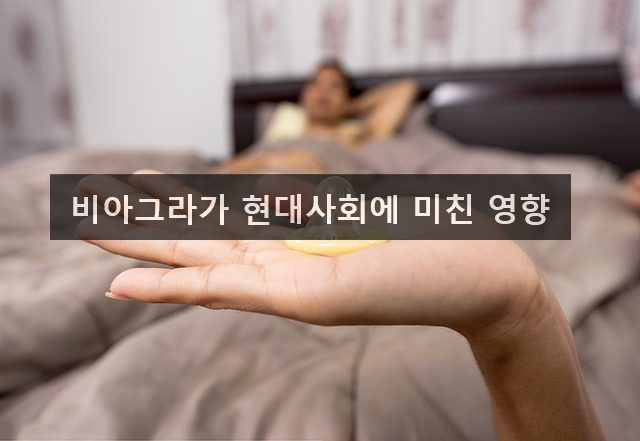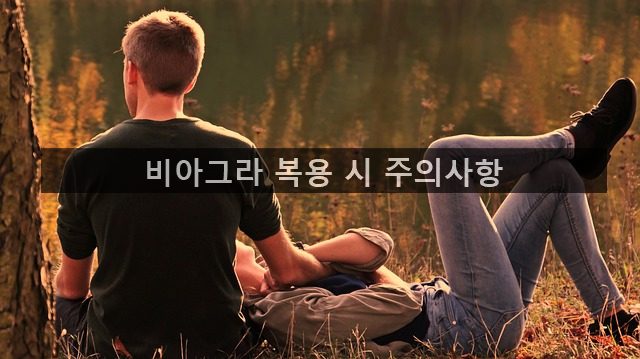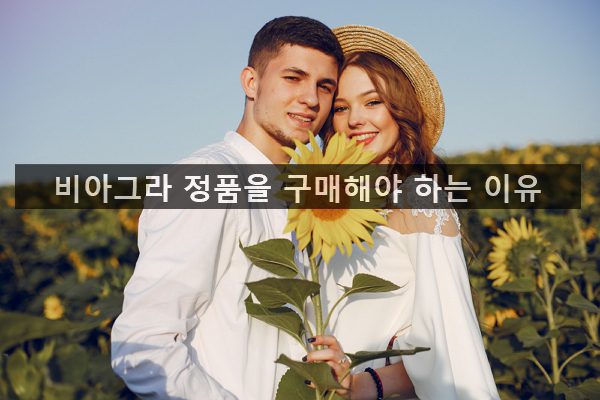우리는 발기부전과 비아그라의 효과와 부작용 등에 대한 여러가지 정보를 제공하는 블로그입니다. 약품의 판매에는 관여하지 않습니다.
We are a blog that provides a lot of information about impotence and the effects and side effects of Viagra. We are not involved in the sale of drugs.
Table of Contents

비아그라 의 개발과정 과 탄생비화
비아그라는 현대에 발기부전 치료제로 광범위하게 인지되고 있으나, 본래 그 개발 의도는 전혀 다른 목적을 가지고 있었습니다. 이러한 배경과 변천의 과정을 조망해 보면 매우 흥미로운 점들이 있습니다.
1990년대 초반, 어느 제약 회사에서는 새로운 약물을 연구 및 개발하였습니다. 그 초기 목적은 고혈압 및 특정한 협심증의 치료를 위한 것이었습니다. 연구의 초기 단계에서, 해당 약물은 심장 관련 질환 치료를 위한 목적으로 개발되기 시작하였으나, 임상 시험 과정에서 의외의 효과가 나타나기 시작하였습니다.
참여하신 환자들 중 일부에서 발기 기능의 개선에 대한 긍정적인 효과를 보고하게 되었습니다. 이러한 발견을 통해 연구팀은 약물의 새로운 잠재적 가치를 인지하게 되었습니다.
따라서 연구팀은 즉시 이 새로운 방향성에 주목하게 되었고, 약물의 다른 효능에 집중하게 되었습니다. 다양한 임상 시험을 거쳐, 그 약물의 발기부전 치료제로서의 효과가 확정되었습니다. 이러한 결과를 바탕으로, FDA는 1998년에 이 약물을 발기부전 치료제로서 공식 승인하게 되었고, 그 후로 수많은 환자들에게 큰 도움을 제공하게 되었습니다.
이렇게 약물의 초기 개발 목적과 시장에서의 활용 방향이 다르게 되는 것은 제약 분야에서도 흔치 않은 사례로, 매우 흥미롭게 다가옵니다.
1. 초기 연구
1980년대 말, 미국의 제약 회사인 Pfizer에서 혈액 순환에 대한 연구를 진행하던 과학자들은 심장 질환과 관련된 혈관확장 작용을 보이는 약물 시험을 진행하였습니다. 이 과정에서 비아그라의 주요 성분인 시알리스(설타필)의 효능을 발견하였습니다.
2.임상 시험
시알리스의 효과를 확인하기 위해 임상 시험을 진행하였습니다. 초기 시험은 심장 질환의 치료 목적으로 시작되었으나, 시알리스가 성기능 장애를 치료하는 데 탁월한 효과를 보였습니다.
3. 효능 및 안전성 검증
시알리스의 성기능 향상 효과와 부작용을 확인하기 위해 대규모의 임상 연구가 진행되었습니다. 이를 통해 비아그라가 성기능 장애 치료를 위한 안전하고 효과적인 약물임이 입증되었습니다.
4. FDA 승인
1998년, 미국 식품의약국(FDA, Food and Drug Administration)은 비아그라를 남성 성기능 장애 치료제로 승인하였습니다. 이후, 비아그라는 전 세계적으로 사용되는 주요한 발기 부전 치료제로 인정받았습니다.
비아그라의 개발은 남성들의 성기능 장애에 대한 혁명적인 해결책으로 받아들여졌고, 수많은 남성들에게 긍정적인 영향을 미치고 있습니다. 이후 몇 십 년 동안, 비아그라와 유사한 다른 성기능 향상 약물들도 개발되었으며, 이는 남성들의 성생활 품질 향상과 자신감 회복에 큰 도움을 주고 있습니다.

비아그라가 현대사회에 미친 영향
비아그라는 20세기 후반에 등장하여 발기부전 치료 분야에 지대한 영향을 미쳤다. 이 약물은 원래 고혈압 및 특정 심혈관 질환의 치료를 위한 연구 과정에서 개발되었지만, 그 연구 과정에서 예상치 못한 발기 증진 효과를 보였다. 이러한 발견은 의학계에 큰 놀람과 함께 새로운 희망을 가져다주었다.
비아그라의 출시 초기에는 그 효과와 안전성에 대한 의문이 제기되기도 했으나, 수많은 임상 시험과 환자들의 경험을 통해 그 효능이 입증되었다. 그 결과, 비아그라는 발기부전 치료의 신뢰할 수 있는 수단으로 널리 인정받게 되었고, 전 세계 수백만 명의 환자들에게 새로운 삶의 질을 선사하게 되었다.
그러나 비아그라가 가져온 변화는 단순히 의학적 효과에만 그치지 않았다. 이 약물의 등장은 성에 대한 사회적 인식과 태도에도 큰 변화를 가져왔다. 발기부전, 이전까지는 말하기 어려웠던 주제 중 하나였다. 그러나 비아그라의 등장과 함께 이 문제에 대한 스티그마가 점차 줄어들기 시작하였다.
또한, 비아그라는 성건강과 연관된 여러 문제들에 대한 공식적인 연구와 토론을 촉진시켰다. 이로 인해 성건강에 관한 과학적 이해와 인식이 크게 발전하게 되었고, 이는 다양한 성건강 관련 질환의 치료와 예방에 큰 도움이 되었다.
결론적으로, 비아그라는 그 단순한 약물적 효능을 넘어서 의학계와 사회 전반에 걸친 광범위한 변화와 발전을 가져왔다. 오늘날 우리는 그 영향력을 여전히 목격하고 있다. 이 약물은 발기부전 치료뿐만 아니라 성건강에 관한 사회적 대화와 연구의 새로운 패러다임을 제시하였다.

비아그라 의 작용원리에 대한 깊은 이해
세계적으로 널리 알려진 발기부전 치료 약물인 비아그라는 많은 남성들에게 새로운 희망의 불씨를 지펴왔다. 그렇다면 이 약물은 어떻게 그 효과를 나타내는 것일까? 본 문서에서는 이 약물의 세부 작용원리에 대해 탐구한다.
- PDE5 억제제의 역할: 비아그라의 주 활성 성분은 시더나필이다. 시더나필은 PDE5(인산 다이에스터라제 5)라는 효소의 활동을 억제한다. PDE5는 주로 남성의 생식기에 위치해 있으며, 이 효소가 활성화되면 발기를 유지하는 데 중요한 cGMP라는 물질을 분해한다. 비아그라가 PDE5를 억제함으로써 cGMP의 분해를 줄이고, 이로 인해 혈관이 확장되어 성기에 더 많은 혈류가 유입된다.
- 혈류 증가의 중요성: 성기의 발기는 해당 부위로의 혈류 증가와 관련이 있다. 증가된 혈류는 성기의 해면체에 충혈되어 발기를 도와준다. 이 약물의 복용 후, 성적 자극이 있을 경우 해면체로의 혈류가 증가하며, 이로 인해 발기가 유발된다.
- 성적 자극의 필요성: 중요한 것은, 이 약물을 복용했다고 해서 자동으로 발기가 되는 것은 아니라는 점이다. 성적 자극이 있을 때만 그 효과가 나타난다. 이는 이 약물이 감정이나 성적 욕구에 직접적인 영향을 미치는 것이 아니기 때문이다.
- 효과의 지속시간: 일반적으로 이 약물의 효과는 복용 후 30분에서 1시간 사이에 나타나며, 약 4~5시간 동안 지속된다. 그러나 개인에 따라 이 시간이 달라질 수 있다.
결론적으로, 이 약물의 작용원리를 이해하는 것은 안전한 복용을 위해 중요하다. 복용 전에는 반드시 의사와 상담하고, 약물에 대한 지식을 갖추는 것이 바람직하다.

비아그라 와 관련된 부작용에 대한 고찰
비아그라는 발기부전 치료의 대표적인 약물로 널리 알려져 있으며, 그 효과는 전세계적으로 입증되었다. 그러나 모든 의약품처럼 이 약물도 부작용의 위험이 있어 복용 시 주의가 필요하다.
- 심혈관계 부작용: 가장 주요한 부작용 중 하나는 심혈관계의 문제다. 일부 환자에서는 복용 후 혈압의 급격한 하락이 발생할 수 있어, 특히 다른 혈압 조절 약물과 함께 복용하는 경우 더욱 주의가 필요하다.
- 시력 관련 문제: 일부 사용자는 일시적인 시력 장애를 경험할 수 있다. 이는 일반적으로 일시적이며, 복용 중단 후 사라질 수 있다. 그러나 지속적인 시력 문제가 발생하는 경우 즉시 복용을 중단하고 의사와 상담해야 한다.
- 청력 문제: 드물게 이 약물의 복용으로 인해 청력 장애가 발생하는 경우가 있다. 이 역시 복용 중단 후 해결될 수 있으나 지속적인 청력 손실의 위험도 있으므로 주의가 필요하다.
- 소화계 문제: 일부 환자는 소화계 증상, 특히 속쓰림, 구토, 위통 등을 경험할 수 있다. 이러한 증상이 지속될 경우 의사의 조언을 구하는 것이 좋다.
- 기타 증상: 그 외에도 근육통, 발진, 두통, 얼굴이 붉어지는 증상 등 다양한 부작용이 보고되었다. 이러한 증상들 중 일부는 일시적이지만, 지속될 경우 전문가와 상담이 필요하다.
비록 이 약물의 부작용 위험이 있을지라도, 적절한 복용 방법과 주의사항을 준수하면 대부분의 환자는 안전하게 복용할 수 있다. 복용 전, 복용 중 그리고 복용 후에도 지속적인 의료 상담을 통해 개인의 상황에 맞는 최적의 치료 방안을 찾아가는 것이 중요하다.
비아그라 복용 시 주의해야 할 건강상태
비아그라는 발기부전 치료제로서 세계적으로 널리 알려져 있다. 그러나 모든 약물처럼 그 효과만이 아니라, 복용할 때 주의해야 하는 사항들이 있다. 특히 일부 건강 상태나 병력을 가진 환자들은 비아그라 복용 시 심각한 부작용이나 약물 간 상호작용 위험에 노출될 수 있다. 본 문서에서는 이러한 건강 상태들을 자세히 살펴볼 것이다.
- 심장 질환: 심장 문제가 있는 환자들은 특히 주의해야 한다. 이 약물은 혈관을 확장시키는 작용을 하기 때문에, 특히 최근에 심장 발작이나 뇌졸중을 경험한 환자, 혹은 안정적이지 않은 협심증 환자에게는 복용을 자제해야 한다.
- 혈압 약 복용자: 높은 혈압 혹은 낮은 혈압 약을 복용하는 환자들도 주의가 필요하다. 비아그라와 혈압 약과의 상호작용으로 인해 혈압이 급격히 변동할 위험이 있다.
- 폐고혈압 환자: 폐고혈압 치료제로 사용되는 리오시구아트나 아데나필과 같은 약물과 함께 비아그라를 복용하는 것은 권장되지 않는다.
- 갑상선 문제: 갑상선 문제를 앓고 있는 환자들은 비아그라와 함께 사용할 때 주의해야 한다. 복용 전에는 반드시 의사와 상의하고, 약물 복용 시의 가능한 위험성을 논의하는 것이 중요하다.
- 특정 약물 복용 중인 환자: 비아그라와 상호작용할 수 있는 약물들이 있다. 특히 니트로글리세린을 포함하는 약물들과의 상호작용은 심각한 부작용을 일으킬 수 있다.
- 기타 상황: 심각한 눈 문제, 비록 적지만 약물과 관련된 귀의 문제, 심한 신장 또는 간 질환이 있는 환자들 역시 복용 전 전문가와 상담이 필요하다.
결론적으로, 비아그라는 효과적인 발기부전 치료제이지만, 모든 환자에게 안전한 것은 아니다. 복용 전에는 반드시 의사와 상담하고, 본인의 건강 상태와 병력을 정확히 알려주는 것이 중요하다.

비아그라 올바른 복용법
비아그라(Viagra)를 복용할 때는 다음의 지침을 따라야 합니다. 하지만 의사의 지시나 처방에 따라 복용해야 하므로, 의료 전문가의 조언을 받는 것이 중요합니다. 아래는 일반적인 비아그라 복용법 안내입니다:
1. 의사 상담
비아그라를 복용하기 전에 의사와 상담하여 의료 기록, 약물 상호작용 및 가능한 부작용 등을 평가해야 합니다.
2. 용량 결정
의사는 개인에게 맞는 적절한 용량을 결정합니다. 보통 비아그라는 25mg, 50mg 또는 100mg의 정량으로 제공되며, 의사는 환자의 건강 상태와 개인적인 요구에 따라 용량을 조정할 수 있습니다.
3. 시간과 식사
비아그라는 성적 활동 1시간 전에 복용되어야 합니다. 음식과 함께 복용하면 흡수 속도가 느려질 수 있으므로 고지방 식사를 피하는 것이 좋습니다.
4. 적절한 복용
정확한 용량을 사용하고 의사의 지시에 따라 비아그라를 복용해야 합니다. 약물을 꼭 필요한 만큼만 복용하고, 권장 용량을 초과해서는 안 됩니다.
5. 효과 지속 시간
비아그라의 효과는 복용 후 약 4-6시간 동안 지속될 수 있습니다. 이 기간 동안 지속된 성적 자극에 응답할 수 있습니다.
6. 주의 사항
비아그라를 복용하는 동안 음주나 알코올 소비를 제한하는 것이 좋습니다. 또한, 다른 성기능 개선 약물과 함께 복용하는 것은 의사와 상담해야 합니다.
이 지침은 비아그라 복용에 대한 일반적인 정보이며, 의료 전문가의 지시에 따라 개인적인 상황에 맞게 조정되어야 합니다. 따라서 비아그라를 사용하기 전에 의사와 상담하고, 처방에 따라 정확히 복용해야 합니다.

비아그라 복용 시 주의사항
비아그라는 세계적으로 널리 알려진 발기부전 치료제로, 많은 환자들에게 큰 도움을 제공하고 있다. 그러나 이 약물을 복용하기 전과 복용 중에 반드시 알아야 할 주의사항이 있습니다. 정확한 복용 방법과 주의점을 숙지하지 않으면, 예상치 못한 부작용이나 약의 효과를 제대로 누릴 수 없을 뿐만 아니라 건강을 해칠 위험이 있습니다.
- 다른 약물과의 병용: 특정 약물들과 함께 복용 시에는 위험한 상호작용이 발생할 수 있다. 특히, 아닐로이드 다이뮤라제 계열, 알파 블로커, 일부 항진균제, 항바이러스제 등과 함께 복용하면 위험할 수 있다. 복용 전 의사나 약사와 상담하는 것이 중요하다.
- 알코올 섭취: 알코올을 섭취하면 본 약의 효과가 감소하거나, 부작용의 위험이 증가할 수 있다. 특히, 비아그라를 복용한 후 과도한 알코올 섭취는 저혈압의 위험을 증가시킬 수 있다.
- 식사와 함께 복용: 고지방 음식을 섭취한 후 복용하면, 이 약의 효과 발현 시간이 지연될 수 있다. 가급적 빈속, 또는 경량식 후에 복용하는 것이 좋다.
- 심혈관 질환: 심장이나 혈관 관련 질환을 앓고 있는 환자는 복용 전 전문의와 상담이 필요하다. 심장에 부담을 주거나 혈압을 떨어뜨리는 부작용의 위험이 있기 때문이다.
- 지속적 발기: 4시간 이상 지속되는 발기가 발생하면 즉시 의료기관을 찾아야 한다. 지속적인 발기는 건강에 심각한 손상을 줄 수 있다.
- 보청기 사용자: 본 약의 복용 후 청력 저하의 증상이 나타날 수 있다. 청력 저하, 귀울림, 청력 손실 등의 증상이 발생하면 즉시 복용을 중단하고 의사와 상담해야 한다.
- 보안과 함께 복용: 이 약물은 본래의 효능 외에도 다양한 부작용을 유발할 수 있으므로, 다른 약물과 함께 복용할 경우 의사나 약사와 상의하는 것이 필수이다.
마지막으로, 항상 의사의 처방에 따라 복용하고, 부작용이나 이상 증상이 발생하면 즉시 복용을 중단하고 의사와 상담하는 것이 바람직합니다.

비아그라의 다른 효능들
비아그라(Viagra)는 주로 남성 성기능 장애(ED, Erectile Dysfunction)의 치료에 사용되지만, 최근 연구들은 비아그라가 다른 효능을 가질 수 있다는 가능성을 제시하고 있습니다. 아래는 비아그라의 다른 효능에 대한 최신 연구 결과를 바탕으로 한 기사입니다.
1. 폐혈압증 치료
비아그라는 폐혈압증(PAH, Pulmonary Arterial Hypertension)이라는 심각한 폐동맥 질환의 치료에 도움을 줄 수 있다는 연구 결과가 나왔습니다. 비아그라는 혈관을 확장시켜 폐동맥압을 감소시키는 효과를 가지고 있어 폐혈압을 조절하는 데 유용할 수 있습니다.
2. 운동 성능 향상
최근 연구는 비아그라가 운동 성능 향상에 도움을 줄 수 있다는 가능성을 제시하고 있습니다. 비아그라는 혈관을 확장시켜 혈류를 증가시키는 효과를 가지고 있어 근육에 산소와 영양분을 공급하는 데 도움이 될 수 있습니다. 이에 따라 비아그라가 운동 시간의 지속성과 근력을 향상시킬 수 있는 역할을 할 수 있습니다.
3. 대사 질환 예방
비아그라는 혈관 확장을 통해 혈액 순환을 촉진시키는 효과를 가지고 있습니다. 이로 인해 비아그라의 장기적인 사용은 심혈관 질환의 발생을 예방하는 데 도움이 될 수 있습니다. 일부 연구는 비아그라가 동맥경화, 심근경색, 뇌졸중 등과 관련된 대사 질환의 위험을 감소시킬 수 있다고 제안하고 있습니다.
비아그라의 다른 효능에 대한 연구는 여전히 초기 단계이며, 추가 연구가 필요합니다. 또한, 비아그라의 부작용과 상호작용 가능성에 대한 고려가 필요합니다. 따라서, 비아그라의 다른 효능을 알아보고자 하는 경우, 의사와 상담하고 안전한 사용을 위해 전문가의 지시에 따라야 합니다.

발기부전으로 고통받는 남성들
발기부전은 성기능장애 중 하나로, 남성이 성적 자극을 받았을 때 정상적으로 성기가 발기되지 않는 상태를 말합니다. 이는 여러 원인, 물리적 또는 심리적, 때로는 둘 다의 조합으로 인해 발생할 수 있습니다. 발기부전이 심리적 원인으로 발생하면 이는 자주 무시되거나 오해의 대상이 될 수 있습니다. 본 문서에서는 발기부전이 남성의 심리에 어떠한 부정적 영향을 미치는지 상세히 살펴보겠습니다.
- 자신감 저하: 남성의 성적 능력은 종종 그들의 자신감과 연결되어 있다고 여겨집니다. 따라서 발기부전으로 인해 성적으로 활동하는 능력이 저하될 경우, 그 결과로 자신감 또한 크게 저하될 수 있습니다.
- 자아상 손상: 성은 인간의 기본적인 본능 중 하나이기 때문에, 발기부전으로 인해 성적 활동에 어려움을 겪는 것은 자아상의 큰 타격을 받을 수 있습니다.
- 관계 내 스트레스: 성적 활동은 대부분의 관계에서 중요한 부분을 차지합니다. 발기부전으로 인한 성적 활동의 문제는 파트너 간의 스트레스나 갈등의 원인이 될 수 있습니다.
- 우울증 및 불안: 지속적인 발기부전 문제는 우울증 및 불안의 원인이 될 수 있습니다. 이러한 감정적 문제는 일상생활에 큰 영향을 미칠 수 있습니다.
- 피하 및 회피: 일부 남성은 발기부전 문제로 인해 성적 활동을 피하거나 회피하는 경향이 있습니다. 이는 관계의 품질 저하와 관계 파탄을 초래할 수 있습니다.
- 자아 도덕성 문제: 발기부전으로 인한 성적 활동의 문제는 남성이 자신의 가치나 존재의 의미에 대해 의심하게 만들 수 있습니다.
비아그라 같은 발기부전 치료제는 이러한 심리적 문제를 해결하는 데 도움을 줄 수 있습니다. 이러한 약물은 성적 활동의 향상을 통해 자신감을 회복하고, 관계 내 스트레스를 줄이며, 우울증 및 불안감을 감소시키는 데 크게 기여할 수 있습니다. 그러나 중요한 것은 발기부전의 원인을 정확하게 파악하고, 적절한 치료 방법을 찾아내는 것입니다. 이에, 전문가와의 상담은 필수적입니다.
결론적으로, 발기부전은 남성의 심리에 큰 영향을 미칠 수 있습니다. 이 문제를 해결하기 위해, 비아그라와 같은 치료제를 사용하는 것 외에도 심리적 지원 및 치료가 필요할 수 있습니다.
남성우울증과 발기부전의 연관성에 대한 깊은 탐구
남성우울증은 국가나 연령대에 상관없이 전 세계의 많은 남성들에게 영향을 미치는 중대한 문제입니다. 우울증은 일상생활의 질을 저하시키고, 일상적인 활동, 사회적 관계, 그리고 심지어 성적 건강에도 큰 영향을 미칠 수 있습니다. 발기부전은 남성우울증의 일반적인 증상 중 하나로, 우울증과 발기부전 사이에는 복잡한 상호작용이 존재합니다. 이 문서에서는 이러한 상호작용에 대해 살펴보며, 우울증이 발기부전의 원인이 될 수 있는 이유와 이를 해결하는 방법에 대해 고찰해보겠습니다.
우울증의 생물학적 영향: 우울증은 뇌의 신경전달물질인 세로토닌, 도파민, 노르에피네프린의 균형을 교란시킬 수 있습니다. 이러한 물질의 불균형은 성적 욕구와 성적 기능에 영향을 미칠 수 있어, 발기부전의 원인이 될 수 있습니다.
정서적 스트레스: 우울증은 높은 수준의 스트레스와 연결되어 있습니다. 지속적인 스트레스는 성적 기능을 저하시킬 수 있으며, 발기부전의 직접적인 원인이 될 수 있습니다.
자신감 및 자존감 저하: 우울증으로 인한 자존감의 저하는 성적 자신감 감소로 이어질 수 있습니다. 이러한 감정은 성적 활동에 대한 두려움이나 회피를 초래하며, 결국 발기부전을 유발할 수 있습니다.
약물 부작용: 우울증 치료를 위해 처방되는 일부 항우울제는 발기부전을 포함한 여러 성적 부작용을 유발할 수 있습니다.
이러한 문제에 대한 해결책 중 하나로, 비아그라는 발기부전 치료에 널리 사용되는 약물 중 하나입니다. 그러나, 비아그라만이 모든 해결책은 아닙니다. 우울증과 발기부전 사이의 복잡한 관계를 고려할 때, 발기부전의 원인이 되는 우울증 자체를 치료하는 것이 중요하게 됩니다.
그렇기에, 발기부전의 원인이 우울증일 경우, 전문가와 상담하고 적절한 치료 방법을 모색하는 것이 중요합니다. 성적 건강 뿐만 아니라, 전반적인 정신 건강을 위해 우울증을 치료하는 것이 필요합니다.
마지막으로, 남성우울증과 발기부전은 서로 영향을 주고받는 복잡한 관계에 있습니다. 이를 인지하고 적절한 조치를 취하는 것이 중요한 첫 걸음이 될 것입니다.
비아그라가 남성의 정신건강에 미치지는 긍정적인 영향
성기능 장애는 많은 남성에게 민감한 문제로 여겨지며, 그로 인한 심리적 스트레스와 자존감 저하는 굉장히 큰 문제가 될 수 있습니다. 이러한 상황에서 효과적인 치료 방법을 제공하는 것이 중요하며, 비아그라는 그 중 하나로 널리 알려져 있습니다. 이 문서에서는 비아그라가 남성의 심리에 어떤 긍정적인 영향을 미치는지에 대해 탐구해보겠습니다.
- 자신감의 회복: 성기능 장애로 인해 많은 남성은 자신감을 잃게 됩니다. 비아그라의 효과적인 치료 결과로, 남성들은 다시 자신의 성능에 대한 자신감을 회복할 수 있습니다. 이러한 자신감은 성적 활동뿐만 아니라 일상 생활의 다른 부분에서도 긍정적인 영향을 미칠 수 있습니다.
- 정서적 안정감: 성적 문제는 남성의 정서에 큰 영향을 미칠 수 있습니다. 그러나 성적 문제를 해결하는 것이 가능하다는 것을 알게 되면, 그로 인해 많은 남성들이 더 큰 정서적 안정감을 느끼게 됩니다.
- 인간관계의 개선: 성적 활동은 대부분의 부부나 연인 간의 관계에서 중요한 요소입니다. 성적 문제로 인한 스트레스와 갈등이 줄어들면, 그로 인해 부부나 연인 간의 관계도 개선될 가능성이 높아집니다.
- 삶의 질 향상: 성적 건강은 전반적인 삶의 질에 큰 영향을 미칩니다. 비아그라로 인한 성적 건강의 개선은 남성의 삶의 질을 전반적으로 향상시킬 수 있습니다.
- 두려움과 걱정 감소: 성적 활동을 시작할 때마다 성적 문제에 대한 두려움과 걱정을 갖는 것은 스트레스의 주요 원인이 될 수 있습니다. 효과적인 치료를 통해 이러한 두려움과 걱정을 크게 줄일 수 있습니다.
결론적으로, 성기능 장애와 그로 인한 심리적 문제는 많은 남성에게 큰 부담이 될 수 있습니다. 그러나 비아그라와 같은 효과적인 치료 방법을 통해 이러한 문제를 극복하고, 더 나은 삶의 질과 높은 자존감을 누릴 수 있습니다.
발기부전과 부부관계
발기부전은 남성에게 발생할 수 있는 고충 중 하나로, 여러 가지 원인에 기인할 수 있습니다. 물리적인 원인 뿐만 아니라 스트레스, 우울, 특정 약물의 부작용 등 다양한 심리적 원인도 있을 수 있습니다. 이러한 발기부전은 부부 또는 연인 간의 관계에 다양한 부정적 영향을 미칠 수 있습니다. 이 문서에서는 발기부전이 부부관계에 미치는 부정적인 영향과 이를 극복하는 방법에 대해 살펴보겠습니다.
- 정서적 거리감 형성: 성적 교류는 부부 간의 친밀감과 연결을 강화하는 중요한 수단입니다. 발기부전으로 인해 성적 활동이 제한되면 이로 인해 두 사람 사이에 정서적 거리감이 생길 수 있습니다.
- 스트레스와 갈등 증가: 발기부전으로 인한 성적 불만족은 부부 사이의 스트레스와 갈등을 증가시킬 수 있습니다. 이로 인해 빈번한 다툼이 일어날 수 있습니다.
- 자신감 감소: 발기부전에 시달리는 남성은 자신의 성적 능력에 대해 불안감을 느낄 수 있습니다. 이로 인해 그들의 자신감이 크게 감소할 수 있습니다.
- 파트너의 불안감: 발기부전의 문제는 남성만의 문제가 아닙니다. 여성 파트너 역시 자신이 원인이라는 불안감을 느끼거나, 자신의 매력이 떨어진다고 느낄 수 있습니다.
- 회피 및 격리: 일부 남성은 발기부전 문제로 인해 성적 활동을 피하거나 회피하려 할 수 있습니다. 이러한 행동은 부부 간의 거리를 더욱 벌릴 수 있습니다.
- 생식 건강에 대한 우려: 발기부전은 생식 건강과 관련된 불안을 야기할 수 있습니다. 특히 아이를 원하는 부부의 경우, 발기부전은 임신의 어려움을 초래할 수 있습니다.
이러한 부정적인 영향을 극복하기 위해서는, 원인을 파악하고 적절한 치료를 받는 것이 중요합니다. 예를 들면, 비아그라는 발기부전 치료에 효과적인 약물 중 하나로 알려져 있습니다. 그러나, 단순히 비아그라 같은 약물을 사용하는 것만으로는 문제를 완전히 해결하기 어렵습니다. 부부 상담, 심리치료, 생활 습관의 개선 등 종합적인 접근이 필요합니다.
마지막으로, 발기부전은 부부관계에 큰 영향을 미칠 수 있지만, 서로에 대한 이해와 지지, 적절한 치료와 상담을 통해 극복할 수 있습니다. 부부는 함께 이 문제에 대한 해결책을 찾아가는 과정에서 더욱 단단한 관계를 형성할 수 있습니다.
심리적 원인도 무시할 수 없습니다. 스트레스, 우울증, 불안, 자존감 저하 등의 문제는 성적 기능에 영향을 줄 수 있습니다. 또한, 특정 생활 습관, 특히 흡연과 과도한 음주는 발기부전의 위험을 증가시킬 수 있습니다.
이러한 원인을 알게 되면, 발기부전의 예방이 가능합니다. 첫째로, 건강한 생활 습관을 유지하는 것이 중요합니다. 규칙적인 운동, 균형 잡힌 식사, 스트레스 관리는 발기부전을 예방하는 데 큰 도움이 됩니다. 둘째로, 흡연과 과도한 음주를 피하며, 정기적인 건강 검진을 통해 위험 요소를 조기에 발견하고 관리하는 것이 중요합니다.
발기부전은 남성들에게 영향을 미치는 신체적, 심리적 요인 등 다양한 원인에 의해 발생할 수 있습니다. 이에 따라 예방을 위해 각각의 원인에 대한 이해와 적절한 대처가 필요합니다. 아래는 발기부전의 주요 원인과 예방법에 대한 정보를 담은 기사입니다.
발기부전과 이혼률의 연관성
발기부전은 성인 남성 중 일부에게 영향을 미치는 문제로, 이는 부부 간의 관계에 큰 영향을 미칠 수 있습니다. 발기부전의 문제는 단순한 신체적 문제로 볼 수 없으며, 그 영향력은 심리적, 정서적 그리고 사회적인 측면에 이르기까지 다양합니다. 이 문서에서는 발기부전이 부부의 관계에 미치는 영향과 이혼 가능성에 어떻게 연결되는지에 대해 탐구합니다.
- 정서적 압박과 스트레스: 발기부전을 겪는 남편은 그 문제로 인해 큰 스트레스와 부끄러움을 느낄 수 있습니다. 그로 인해 자신감 감소, 우울증, 무력감 등의 감정이 발생할 수 있으며, 이는 부부 간의 관계에 부정적인 영향을 줄 수 있습니다.
- 성적 만족도 감소: 성적 활동은 부부 간의 유대와 친밀감을 높이는 중요한 요소 중 하나입니다. 발기부전으로 인해 성적 만족도가 감소하면, 이는 부부 간의 애정 표현과 친밀감 감소로 이어질 수 있습니다.
- 소통의 부재: 발기부전에 대한 논의는 많은 부부에게 민감한 주제로 여겨집니다. 이로 인해 소통의 부재가 발생하며, 이는 오해와 갈등의 원인이 될 수 있습니다.
- 비아그라와 다른 치료법: 발기부전의 치료는 다양합니다. 비아그라는 그 중 가장 잘 알려진 치료제입니다. 그러나 부부는 치료의 필요성과 방법에 대해 함께 논의해야 합니다. 잘못된 정보나 오해는 더 큰 문제로 이어질 수 있습니다.
- 이혼 가능성: 위의 문제들은 합쳐져 부부 간의 이질감과 갈등을 높일 수 있습니다. 이러한 문제가 지속되면, 이혼을 고려하는 부부도 있을 수 있습니다.
결론적으로, 발기부전은 복잡한 문제로서 부부 간의 관계에 큰 영향을 미칠 수 있습니다. 하지만 이 문제를 극복하고 함께 성장하기 위해서는 소통, 이해, 그리고 적절한 치료가 필요합니다. 발기부전 문제로 인한 이혼의 가능성은 높일 수 있으나, 서로에 대한 이해와 지지, 그리고 전문가의 도움을 통해 이 문제를 함께 극복할 수 있습니다.
비아그라 의 부부관계 개선 효과
성과 관련된 문제는 많은 부부들이 겪게 되는 어려움 중 하나입니다. 이러한 문제는 오해와 갈등의 원인이 될 수 있으며, 이는 부부 간의 감정적 연결을 약화시킬 수 있습니다. 여기에서는 성기능 장애의 치료를 위해 널리 사용되는 비아그라가 부부관계에 어떻게 긍정적인 영향을 미치는지에 대해 다루겠습니다.
- 성생활의 질 향상: 성생활은 부부 관계의 중요한 부분 중 하나입니다. 성적 문제로 인해 스트레스나 불안을 느끼는 경우, 이를 해결하는 것은 부부 간의 관계를 향상시키는 첫걸음이 될 수 있습니다. 비아그라를 사용함으로써 발기부전 문제를 극복하게 되면, 이로 인해 부부간의 성생활의 질이 크게 향상될 수 있습니다.
- 감정적 연결 강화: 성적 문제는 부부 간의 감정적 거리를 가져올 수 있습니다. 성적 활동이 원활하지 않을 경우, 이는 부부 간의 감정적 연결을 약화시킬 수 있습니다. 그러나 비아그라를 통해 성적 문제를 극복하게 되면, 이로 인해 부부 간의 감정적 연결이 다시 강화될 수 있습니다.
- 자존감 및 자신감 회복: 성적 문제로 인한 자존감 저하는 부부 관계에도 부정적인 영향을 미칠 수 있습니다. 그러나 효과적인 치료를 통해 이러한 문제를 극복하게 되면, 남편 또는 아내 모두가 자신의 성적 능력에 대한 자신감을 회복할 수 있습니다.
- 부부 간의 소통 개선: 성적 문제를 겪게 되면, 이에 대해 소통하는 것은 중요합니다. 비아그라와 같은 치료 방법을 사용하게 되면, 부부 간에 성에 대한 소통이 더 원활하게 이루어질 수 있습니다.
- 일상생활의 스트레스 감소: 성적 문제는 일상 생활의 스트레스 원인이 될 수 있습니다. 그러나 이를 극복함으로써 부부는 일상 생활에서 더욱 행복하고 스트레스 없는 시간을 보낼 수 있게 됩니다.
결론적으로, 비아그라는 성적 문제를 극복하는 데 도움을 주는 도구 중 하나입니다. 이를 통해 부부는 성적 활동뿐만 아니라 감정적 연결, 소통, 그리고 일상 생활의 질 등 여러 부분에서 긍정적인 변화를 경험할 수 있습니다.

발기부전의 대표적인 원인과 예방법
발기부전은 남성의 성생활에서 중요한 문제로, 다양한 원인에 기인할 수 있습니다. 이 문제는 연령과 관련되어 있을 수는 있지만, 그것만이 원인은 아닙니다. 물리적 원인 중 하나로는 혈관 문제가 있습니다. 동맥 경화, 고혈압, 당뇨병과 같은 상태는 발기부전과 관련이 있을 수 있습니다. 또한, 몇몇 약물이나 수술, 특히 전립선 수술 후에도 발기부전이 발생할 수 있습니다.
심리적 원인도 무시할 수 없습니다. 스트레스, 우울증, 불안, 자존감 저하 등의 문제는 성적 기능에 영향을 줄 수 있습니다. 또한, 특정 생활 습관, 특히 흡연과 과도한 음주는 발기부전의 위험을 증가시킬 수 있습니다.
이러한 원인을 알게 되면, 발기부전의 예방이 가능합니다. 첫째로, 건강한 생활 습관을 유지하는 것이 중요합니다. 규칙적인 운동, 균형 잡힌 식사, 스트레스 관리는 발기부전을 예방하는 데 큰 도움이 됩니다. 둘째로, 흡연과 과도한 음주를 피하며, 정기적인 건강 검진을 통해 위험 요소를 조기에 발견하고 관리하는 것이 중요합니다.
발기부전은 남성들에게 영향을 미치는 신체적, 심리적 요인 등 다양한 원인에 의해 발생할 수 있습니다. 이에 따라 예방을 위해 각각의 원인에 대한 이해와 적절한 대처가 필요합니다. 아래는 발기부전의 주요 원인과 예방법에 대한 정보를 담은 기사입니다.
1. 신체적 원인
혈관 문제: 동맥경화, 고혈압 등 혈관 질환은 혈류를 제한하여 발기에 영향을 줄 수 있습니다. 이를 예방하기 위해 규칙적인 운동, 건강한 식습관 유지, 흡연과 과도한 음주를 피해야 합니다.
호르몬 이상: 낮은 테스토스테론 수준이 발기 기능에 영향을 미칠 수 있습니다. 이 경우 의사와 상담하여 호르몬 치료를 검토해볼 수 있습니다.
2. 심리적 원인
스트레스와 불안: 스트레스, 불안, 우울 등은 발기에 부정적인 영향을 줄 수 있습니다. 심리적 안녕을 위해 스트레스 관리, 정신적 안정을 위한 휴식, 심리 상담 등을 고려할 수 있습니다.
성적 자신감 부족: 성적 자신감 부족은 발기 기능에 영향을 줄 수 있습니다. 이를 극복하기 위해 파트너와의 소통, 성교육, 심리적 지원을 받는 것이 도움이 될 수 있습니다.
3. 생활 습관과 환경 요인
흡연과 음주: 흡연과 과도한 음주는 혈관을 수축시키고 성적 기능을 저하시킬 수 있습니다. 흡연을 중단하고 음주량을 조절하는 것이 예방에 도움이 됩니다.
약물 및 알코올 남용: 약물 남용이나 과도한 알코올 소비는 성적 기능에 영향을 줄 수 있습니다. 약물 남용을 피하고, 알코올 소비량을 적절히 조절하는 것이 발기부전 예방에 도움이 됩니다.
4. 기타 원인
만성 질환: 당뇨병, 고지혈증, 신장 질환 등은 발기 부전의 원인이 될 수 있습니다. 이러한 질환을 관리하고 적절한 치료를 받는 것이 중요합니다.
약물 부작용: 일부 약물은 발기 기능에 영향을 줄 수 있습니다. 약물의 부작용을 확인하고, 필요한 경우 의사와 상담하여 대체 약물을 고려할 수 있습니다.
발기부전을 예방하기 위해서는 건강한 생활습관을 유지하고, 신체적, 심리적 요인을 관리하는 것이 중요합니다. 또한, 의사와의 상담과 규칙적인 건강 체크업을 통해 발기부전의 원인을 파악하고 조기에 대처하는 것이 좋습니다.
발기부전 치료법
발기부전은 많은 남성들이 직면하는 문제 중 하나로, 심리적인 요인, 신체적인 요인 또는 둘 다의 결합으로 발생할 수 있습니다. 발기부전은 생활의 질을 저하시키고, 자존감에 영향을 미칠 수 있습니다. 이 문서에서는 발기부전의 주요 치료법 중 하나인 비아그라와 그 효과에 대해 알아보겠습니다.
- 발기부전의 원인
- 신체적 요인: 당뇨병, 고혈압, 심장 질환, 호르몬 불균형, 약물 부작용 등과 같은 신체적인 요인이 발기부전의 주요 원인 중 하나입니다.
- 심리적 요인: 스트레스, 우울증, 불안, 성관련 두려움 등과 같은 심리적인 요인도 발기부전을 초래할 수 있습니다.
- 비아그라의 작용 원리 첫 번째 키워드 사용: 비아그라는 발기부전 치료제로 널리 알려져 있습니다. 이 약은 남성의 성기에 피를 공급하는 혈관을 확장시키는 데 도움을 줌으로써 작동합니다. 이로 인해 성적 자극이 있을 때 발기가 더 쉽게 이루어질 수 있습니다.
- 다른 발기부전 치료법
- 생활 습관의 개선: 음주, 흡연, 과도한 카페인 섭취 등의 나쁜 습관을 줄이고, 규칙적인 운동을 함으로써 발기부전 문제를 개선할 수 있습니다.
- 심리적 치료: 심리상담은 발기부전의 심리적 원인을 치료하는 데 도움을 줄 수 있습니다.
- 흡입 장치: 펌프를 사용하여 성기에 진공을 생성하고 이를 유지하는 방식입니다.
- 자극요법: 전기 자극을 통해 발기를 유도하는 치료법입니다.
- 치료 선택시 고려사항 첫 번째로, 본인의 건강 상태와 발기부전의 원인을 정확히 파악해야 합니다. 그 후, 가장 적합한 치료법을 선택하는 것이 중요합니다. 두 번째 키워드 사용: 예를 들어, 비아그라는 심장 질환을 앓고 있는 환자나 특정 약물과 상호작용할 수 있으므로, 의사와 상의 후에 복용해야 합니다.
결론적으로, 발기부전은 다양한 원인으로 발생할 수 있으며, 그에 따라 다양한 치료법이 존재합니다. 개인의 상황에 맞는 적절한 치료를 선택하고, 전문가와 상의하는 것이 중요합니다.

비아그라 는 어떻게 발기를 가능하게 할까?
비아그라의 주요 성분인 실데나필은 인산가닥체 5형 효소(PDE-5)를 억제하는 작용을 가지고 있습니다. PDE-5는 남성의 성적 자극에 따라 발기를 억제하는 역할을 합니다. 이 약물은 PDE-5 억제제로, 이 작용을 막아 성적 자극 시 혈관을 확장시키고, 발기를 돕는 역할을 합니다.
해당 제품을 복용하면 시알리스가 소화 흡수되어 혈류에 흡수됩니다. 그리고 남성이 성적 자극을 받으면, 성적 자극에 의해 분비되는 일산화질소(NO)와 함께 시알리스가 작용하여 PDE-5 효소를 억제합니다. 이로써 혈관 내의 근육이 이완되고 혈류가 증가하여 남성의 성기에 충분한 혈류가 도달하게 됩니다.
해당 약물의 작용은 성적 자극을 받았을 때 발생하며, 자연스럽고 임의적인 발기를 유발하는 것이 아닙니다. 이 제품은 성적 자극에 대한 반응을 향상시키고 지속시키는 역할을 합니다. 이로써 남성은 성적 자극에 대해 더 나은 반응을 보이며, 발기 기능의 개선과 성적 만족도 향상을 경험할 수 있습니다.
하지만 이 약물을 복용할 때는 의사의 처방에 따라 정확한 용량과 복용 방법을 따라야 합니다. 또한, 부작용이나 약물 상호작용에 주의해야 합니다. 따라서 의사와의 상담과 지침을 따르는 것이 중요합니다.
이 제품은 발기부전 치료를 위한 중요한 약물로서, 성적 자극에 대한 정상적인 발기를 돕는 화학적 원리를 통해 남성들이 발기 부전에서 벗어나고 성적 자신감을 회복할 수 있도록 도와주고 있습니다. 그러나 모든 남성에게 적합한 것은 아닙니다. 의료 전문가의 상담과 처방에 따라 적절한 용량과 사용법을 결정해야 합니다.
비아그라의 작용 원리는 심각한 기질성 질환, 혈액 순환 문제, 호르몬 이상 등 발기 부전의 원인에 따라 다를 수 있습니다. 따라서 복용 전, 해당 원인에 대한 정확한 진단과 평가가 필요합니다. 의사는 환자의 건강 상태와 약물 복용 여부를 고려하여 적절한 처방을 결정할 것입니다.
부작용이 발생할 수도 있으며, 일반적으로 가장 흔한 부작용은 두통, 어지러움, 소화 장애, 안구의 혈관확장 등이 있습니다. 심각한 부작용이나 알러지 반응이 발생할 경우 즉시 의사에게 보고해야 합니다.
또한, 다른 약물과 상호작용할 수 있으므로 의사에게 복용 중인 약물 및 의학적 조언을 제공해야 합니다. 특히진행 중인 심혈관 질환, 간 또는 신장 질환, 안구 질환 등이 있는 경우 의사에게 사전에 알려야 합니다.
약물과 다른 의약품이나 보조제, 식품 등과의 상호작용이 발생할 가능성도 있기에, 비아그라 복용 전에 의사나 약사에게 복용하고 있는 모든 약물과 보조제, 식품에 대한 정보를 제공하는 것이 중요하다는 점을 강조하고 싶습니다. 예를 들면, 일부 심장 질환 치료 약물인 아밀로나이트나 니트로글리세린과 같은 질산염류 약물과 함께 복용 시 혈압이 크게 떨어질 수 있으므로 주의가 필요합니다.
이러한 상호작용 뿐만 아니라 개인의 건강 상태나 기저 질환에 따라서도 해당 약물의 효과나 안전성이 달라질 수 있습니다. 따라서, 비아그라를 처방 받기 전에 자신의 건강 상태를 정확히 의사에게 알리는 것이 중요합니다.
또한, 복용 후 운전이나 높은 집중력을 요구하는 작업을 하기 전에 본인의 몸의 반응을 확인하는 것이 좋습니다. 일부 사람들은 어지러움, 시력 문제 등의 증상을 경험할 수 있기 때문입니다.
비아그라는 많은 남성들에게 도움을 주는 약물이지만, 복용 전에는 반드시 의사와의 충분한 상담을 거쳐야 합니다. 자신의 건강 상태, 복용 중인 다른 약물, 가능한 부작용 및 상호작용 등에 대해 충분히 숙지한 후 복용하는 것이 안전하다는 점을 명심해야 합니다.
비아그라 복용과 관련된 모든 정보와 조언을 얻기 위해선 전문가와의 상담이 필수적입니다. 약물을 안전하게 복용하기 위해서는, 본인의 건강 상태와 함께 복용 중인 약물, 보조제, 식품 등 모든 정보를 의사에게 제공하는 것이 매우 중요합니다.
비아그라의 다양한 의학적 활용
비아그라는 발기부전 치료제로서 가장 잘 알려져 있지만, 이 약의 본래 개발 목적은 다르게 시작되었습니다. 실제로, 비아그라는 다른 질병 치료를 위한 연구 중에서 발견된 것이며, 현재까지 다양한 질병에 대한 치료 연구와 활용이 진행되고 있습니다.
-
페일리 선도 장애 치료:
페일리 선도 장애는 심장의 오른쪽 및 폐로의 혈액 순환에 문제가 발생하는 상태입니다. 비아그라는 이러한 질환에서 폐 혈관의 확장을 도와 순환을 개선시키는 데 도움을 줄 수 있습니다.
-
산소치료 및 고산 병
고산지대나 비행 중 감소된 산소 농도에 대응하기 위해 비아그라는 연구되어 왔습니다. 이 약은 폐의 혈관을 확장시켜 폐 기능을 향상시키고 산소 공급을 증가시키는 데 도움을 줍니다. 이로 인해, 고산 병의 증상을 완화시키는 데 효과적이라는 연구 결과가 있습니다.
-
레이노 증후군 치료
레이노 증후군은 손가락과 발가락의 소혈관이 과도하게 수축되면서 통증 및 발색 변화가 발생하는 질병입니다. 비아그라는 이러한 혈관 수축을 완화시키고 혈류를 증가시키는 데 도움을 줍니다. 따라서, 레이노 증후군의 증상 완화에 활용되는 치료법 중 하나로 고려되고 있습니다.
-
심장 질환 치료
비아그라의 혈관 확장 효과는 심장 질환 환자에게도 도움을 줄 수 있습니다. 특히, 폐동맥 고혈압과 같은 특정 질환에서는 비아그라가 심장에 공급되는 혈량을 증가시키는 데 효과적이라는 연구 결과가 있습니다.
-
심근경색 후 회복
최근의 연구에서, 심근경색(심장의 일부분이 혈액 공급을 잃는 상황) 후 회복과정에서 비아그라의 활용 가능성이 제시되었습니다. 약물의 특성 상 심장의 손상 부위에 더 많은 혈액을 공급할 수 있어 회복을 촉진시킬 수 있습니다.
결론적으로, 비아그라는 발기부전 치료 외에도 다양한 의학적 활용 분야에서 연구되고 있습니다. 이러한 연구와 활용은 앞으로도 지속적으로 진행될 것으로 예상되며, 그 결과로 다양한 치료 분야에서의 활용 가능성이 확대될 것입니다.

비아그라 정품을 구매해야 하는 이유
약물의 효과와 안전성은 환자의 건강과 직결되는 중요한 요소입니다. 특히 발기 부전 치료제로 널리 알려진 비아그라의 경우, 정품의 중요성은 더욱 강조되어야 합니다. 다음은 해당 제품의 정품 구매의 필요성에 대한 설명입니다.
안전성 보장: 약물의 안전성은 해당 제품의 효능과 직결됩니다. 제품의 정확한 성분과 비율, 그리고 제조 과정은 의약품의 효과와 안전성을 결정짓는 핵심 요소입니다. 정품만이 이러한 품질 기준과 절차를 엄격하게 준수하며 제조됩니다.
효과적인 치료: 정확한 조성과 성분으로 만들어진 해당 제품의 정품은 연구 및 개발 과정에서 입증된 효과를 보장합니다. 반면, 정품이 아닌 제품은 기대한 치료 효과를 얻기 어렵거나, 부작용의 위험이 높아질 수 있습니다.
경제적 이익: 처음에는 저렴한 가격에 구매한 가짜 제품이 경제적으로 이득처럼 보일 수 있습니다. 그러나 장기적으로 보면, 부작용이나 기대했던 효과의 부재로 인한 추가적인 의료비용이 발생할 수 있습니다. 따라서, 처음부터 해당 제품의 정품을 구매하는 것이 경제적으로 더욱 효율적입니다.
신뢰의 확보: 환자의 신뢰는 의료 분야에서 중요한 가치입니다. 해당 제품의 정품은 제조사의 브랜드 가치와 신뢰도를 보장합니다. 반면, 가짜 제품은 환자의 신뢰를 저하시키고, 의약품 전체에 대한 불신을 유발할 수 있습니다.
정품 약물의 중요성은 단순히 효과나 가격에 국한되지 않습니다. 환자의 건강과 생명을 직접적으로 영향을 줄 수 있는 의약품의 경우, 품질과 신뢰성을 최우선으로 고려해야 합니다. 따라서, 해당 제품의 정품 구매는 환자의 건강을 보호하고 의료의 질을 향상시키는데 필수적인 선택이 됩니다.
비아그라 구매 시 주의할 점
비아그라는 전세계적으로 인기 있는 발기 부전 치료제로서, 많은 남성들에게 그 효능이 인정받아왔습니다. 그러나 그 인기만큼 위조품이나 정상적이지 않은 경로를 통한 제품이 시장에 출현하는 경우도 빈번하게 발생하고 있습니다. “비아그라 구매” 시에는 다음과 같은 주의사항을 염두에 두어야 합니다.
정당한 처방 및 판매 경로 확인: 의약품인 비아그라는 일반적으로 의사의 처방을 필요로 합니다. 따라서 약국 또는 신뢰할 수 있는 온라인 약국을 통해서만 구매해야 합니다. “비아그라 구매”를 계획한다면 처방전을 취득하는 과정에서 본인의 건강 상태와 해당 약물과의 상호작용 가능성을 상담받는 것이 좋습니다.
제품 라벨 및 포장 확인: 정품과 가짜 제품을 구별하기 위해서는 제품의 라벨과 포장을 자세히 살펴보는 것이 중요합니다. “비아그라 구매” 후 제품을 받았을 때, 라벨에 오타, 비정상적인 로고, 흐릿한 인쇄 등의 이상이 있다면 제품의 진위를 확인해야 합니다.
비정상적인 가격 조심: 특별한 할인이나 이벤트 없이 비정상적으로 저렴한 가격에 판매되는 제품에 대해서는 주의가 필요합니다. 이러한 제품은 위조품일 확률이 높으므로 “비아그라 구매” 전에 항상 시장 가격을 확인하고 비교해보는 것이 좋습니다.
제조 및 유통기한 확인: 모든 의약품은 유효기한이 있습니다. 유효기한이 지난 제품은 효능이 떨어질 뿐만 아니라, 부작용을 유발할 위험이 있습니다. 따라서 “비아그라 구매” 후 제품을 사용하기 전에 항상 유효기한을 확인하고, 기한이 지난 제품은 사용하지 않아야 합니다.
구매 후 부작용 발생 시 조치: 비아그라나 다른 약물을 복용한 후 예상치 못한 부작용이 발생한다면 즉시 사용을 중단하고 의사와 상담해야 합니다.
정리하면, 비아그라는 많은 남성들에게 효과적인 치료제로 인정받고 있지만, 잘못된 제품을 구매하거나 부적절한 방법으로 복용한다면 건강에 해를 끼칠 수 있습니다. 따라서 제품 구매와 사용 시에는 위의 주의사항을 반드시 지켜야 합니다.
